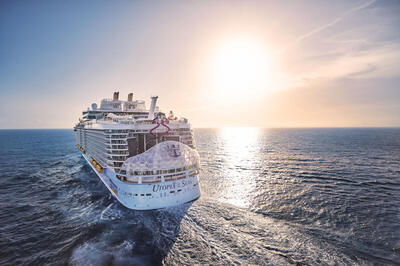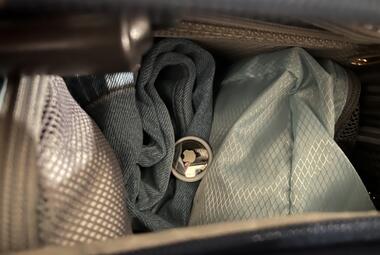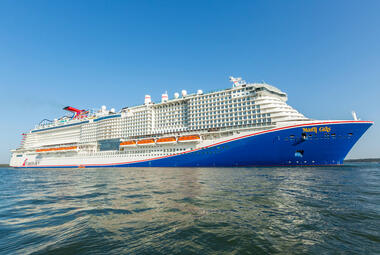The largest cruise ships weigh hundreds of thousands of tons, yet they float effortlessly on the water.
For example, Icon of the Seas, the world's largest cruise ship, measures over 245,000 gross registered tons (GRT). While compared to Icon ships like Vision of the Seas are tiny, they're still large compared to other vessels, coming in at around 78,340 GRT.
As much as we'd like to believe that magic keeps these engineering marvels above the water, there's actually a scientific explanation as to how cruise ships float.

Captain James, a cruise captain working aboard Royal Caribbean's Navigator of the Seas, took to social media to explain how, despite their massive sizes and weights, cruise ships can float and travel smoothly across the ocean.
"It all has to do with the weight distribution," he begins, "On a cruise ship, you have a lot of weight on the bottom of the ship; that's the steel in the hull, the engines..., the freshwater tanks, plus our fuel tanks."
He goes on to talk about how, while it looks like there's a lot above the surface, it's really just a lot of space and volume: "That's what the top is with all the guest cabins. The big weights we have on the top of the ship would be the swimming pools."
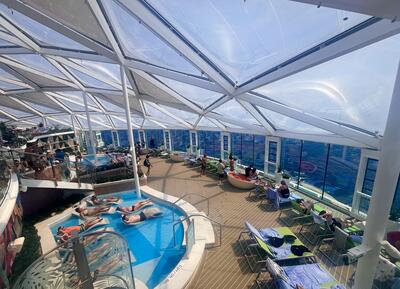
On Navigator, for example, the pools weigh 216 tons. With the top half of the ship being mostly empty volume, despite the countless restaurants, bars, swimming pools, and theaters onboard, the vessel isn't a giant rock in the ocean.
"A good way to think of it is if you put a bucket in some water and put a 5-pound weight in the bottom. The bucket will still float [because] all that weight is in the bottom keeping it stable."
Essentially, this means that cruise ships stay above the water because they displace an equal amount of water to their mass. The sea's pressure pushes against the ship's hull to counter the downward force of the vessel's mass. Since water can't be compressed, the combined force creates buoyancy.
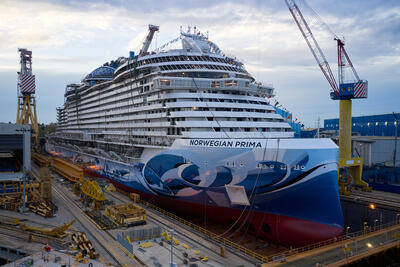
Archimedes' principle, conceived by the ancient Greek mathematician and physicist, helps explain how buoyancy works.
The principle states that any object that's fully or partially submerged in water is acted on by a buoyant force with strength that's equal to the weight of the water displaced by the object. Then, the object's weight is reduced by the weight of the displaced water.
The shape of the hull is also important. Standard boats have a "v-hull," meaning that the bottom resembles a "V" when out of the water. Cruise ships, however, have rounded hulls that look like the letter "U" because round-bottom hulls glide through the water more smoothly, making them more stable than v-shaped hulls.
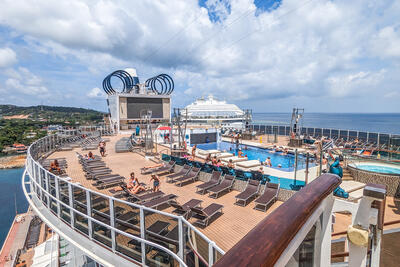
Wider hulls also help with stability. For example, Wonder of the Seas is nearly as wide as she is tall, measuring about 240 feet above sea level with a berth of 215 feet.
Successful engineering backed by science has allowed these massive vessels to stay afloat and safely sail across the world's oceans, from the Bahamas to Alaska, Europe, and beyond.
So, next time you're on a cruise ship, remember that centuries of scientific understanding were applied to help the massive vessels float safely while you enjoy everything onboard!


